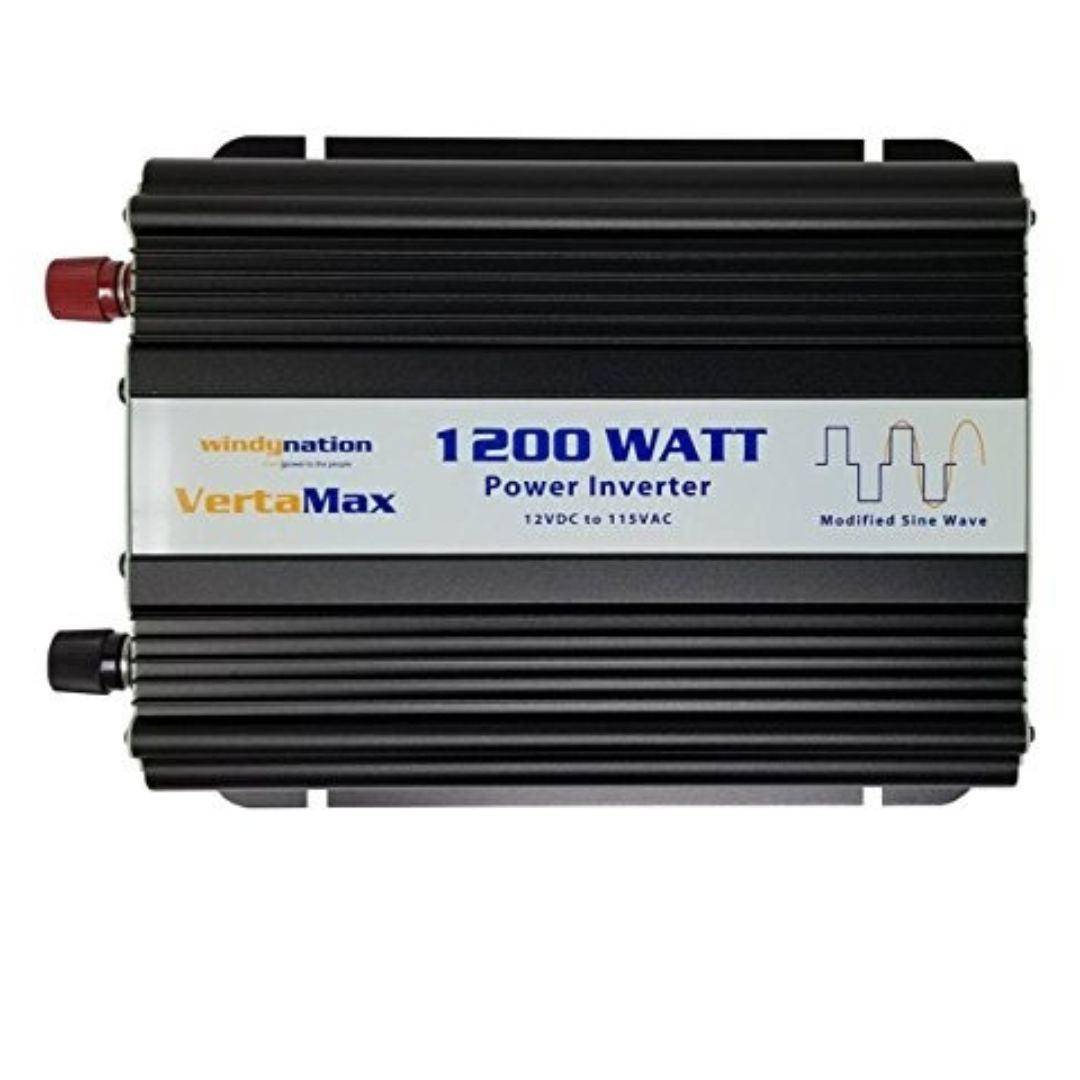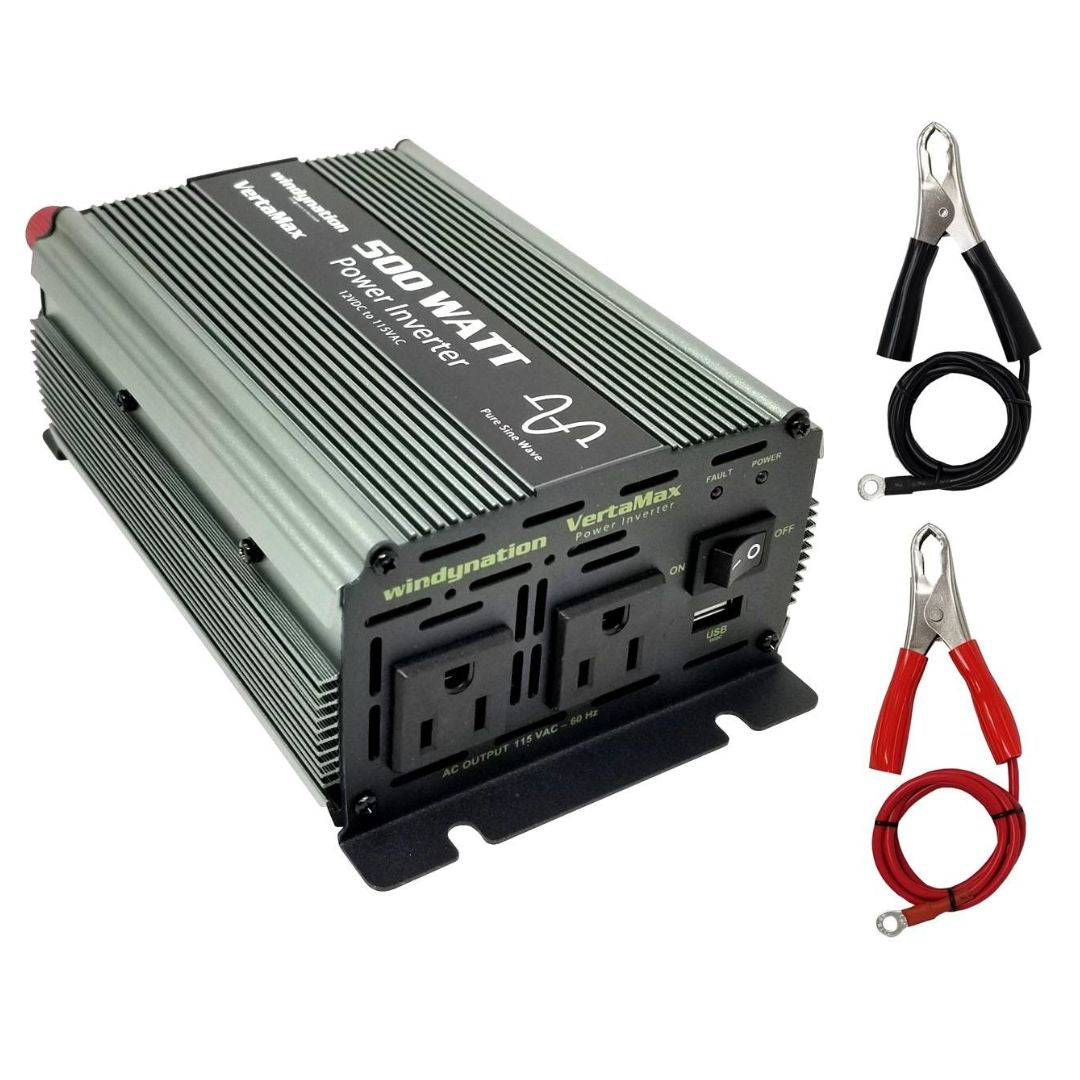If you’re asking “what size power inverter do I need?”, you’re not alone. Picking the right inverter depends on how much power your devices need, how efficiently the inverter runs, and how long you plan to use it. Whether for your car, RV, or off-grid setup, choosing the right inverter size ensures safe, reliable power without draining your battery too fast.
Step 1: List Your Loads
Start by listing every device you plan to power. Note each device’s running wattage (found on the label or in the manual). Typical examples include:
-
Laptop: 60–200 W
-
Fridge: 150–800 W (with higher startup surges)
-
TV: 100–400 W
-
Phone/Camera Charger: 5–60 W
Step 2: Add Up Continuous Power
Add the running wattages together to find your total continuous load — the amount of power your inverter must provide during normal operation.
Step 3: Factor in Surge Power
Some appliances, like refrigerators or pumps, draw extra power at startup. Multiply your total running wattage by 1.25–2× to account for these short surges.
Step 4: Choose the Right Inverter Rating
Select an inverter with a continuous wattage rating equal to or slightly above your total continuous load, and a surge rating that covers startup spikes.
-
Example: If your continuous load is 1200 W and you expect brief surges up to 2400 W, choose a 1500–1800 W inverter with a 3000–3600 W surge rating.
Step 5: Consider Efficiency and Runtime
Inverters convert DC battery power to AC electricity, but they’re not 100% efficient. Look for models with 85–95% efficiency to maximize battery life. Higher efficiency means less wasted power and longer runtimes.
Step 6: Match Your Battery Capacity
Your inverter size also depends on your battery bank. Deep-cycle or AGM batteries handle continuous power draw better than regular car batteries. Check your battery’s amp-hour (Ah) rating to ensure it can supply enough energy for the load and duration you need.
If you’ll run the inverter while your engine is on, the alternator can help recharge the battery. But if you’re using it with the engine off, ensure your battery capacity can sustain the load without discharging too deeply.
Here are some Power Inverter you can consider for buying:
1. VertaMax 1200 Watt Power Inverter - Modified 12V Inverter for Reliable Power
2. VertaMax 1000 Watt Power Inverter - 12 Volt Pure Sine Wave Inverter

3. VertaMax 1500 Watt Power Inverter - Modified 12V for Reliable Power Supply
4. VertaMax 500 Watt Power Inverter - Pure Sine Wave 12V Inverter for Reliable Power Solutions
Practical Tips
-
Always calculate both peak (startup) and average (running) loads.
-
Use a battery monitor to track voltage and charge levels.
-
Start small, a 1000–1500 W inverter suits most basic setups and upgrade if your power needs grow.
-
Avoid running high-power devices (like air conditioners or microwaves) on small inverters.
When deciding what size power inverter do I need, it’s all about balance matching your load, surge, battery capacity, and inverter efficiency. A properly sized inverter not only protects your electronics but also extends your battery’s life and ensures smooth operation whether you’re parked, camping, or on the road.





